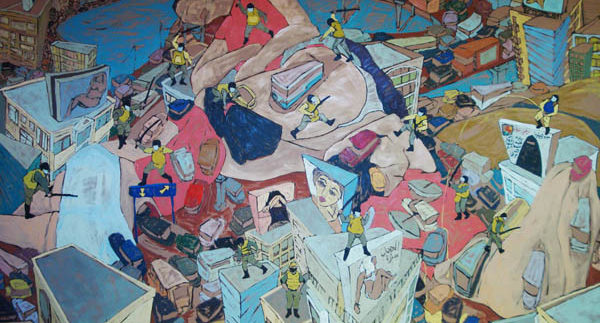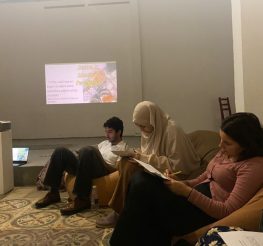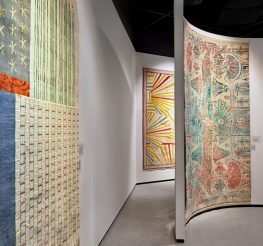‘Politica’ Exhibition by Ahmed Kassim at Safar Khan Art Gallery
Safar Khan Art Gallery: ‘Politica’ by Ahmed Kasim
-
6 Brazil Street
-
Galleries
-
-
Mon - Sat, 10 am - 2 pm & 5 - 9 pm
Anne de Groot

For some people, the revolution ended on February 11th last year, but for others;
it never stopped. Not only have the events of last year served as a source of
inspiration for artists, but even recent events are being immortalized in art.
Ahmed Kassim is a young artist who adds a
subtle sense of humour to his paintings, mixed with intricately woven webs of
details that portray the chaotic world around him.
All pieces on display
at Safar Khan Gallery by Kassim are significantly big, so much so that you’ll find yourself staring at the pieces and discovering new details.
A recurring theme in Kassim’s work is the use of modern technology. In his
piece ‘Media’ for instance, we see a clapperboard in the bottom-right corner. In the
left top corner we see the words ‘Rec’ in red giving the impression you are
watching a scene through a video camera. ‘Media’ is one of those pieces that
will have you captivated for a long time. The centrepiece of the painting is a row
of huge KFC buckets. Around the buckets is an overabundance of cars, and
people, capturing the mania of the protests perfectly.
The best piece of the
collection is without a doubt ‘Utopia’. This piece tackles the issues women in
Egypt face every day. We see part of Downtown Cairo and 6th of
October Bridge in the background. The piece centres around two very large semi-naked
women lying on the ground. The buildings
around have billboards on top of them with other images of semi-naked women. Soldiers
in riot gear pepper the image and they’re all shown beating the women, and one
is even shown ecstatically urinating from the top of a building.
‘Pac-Man’ is another piece that is full of
imagery. Across the classic Pac-man maze,
we see obstacles including policemen and tanks, but also an ambulance,
tents, the Twitter, Facebook and YouTube logos, and a throne. Similar ideas run
through ‘Snake and Ladder’. Again, the
mania of the revolution is represented perfectly; ladders point to images of
KFC and bread, but the snakes lead you to a prison cell door and a troop of riot
police, among other things.
Kassim relays a very
Egyptian humour and sarcasm through his work, and the plurality in imagery is engaging
and entertaining but it still carries shades of despair.
Write your review
recommended
 Arts & Culture
Arts & Culture
Culture Beyond Museums: 5 Spaces in Egypt Sparking Curiosity
Cinema du Mounira Cultural Spots +4 Shopping
Shopping
Black Friday 2025: Where to Find Discounts & Offers in Egypt
Affordable shopping black friday +3 Arts & Culture
Arts & Culture
Cairo Design Week 2025: A Celebration of Creativity Across the City
Art Galleries in Zamalek arts and crafts +3 Restaurants
Restaurants

